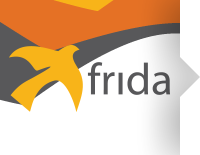Help for a sister
31/01/2017


Originally designed to address a personal communication need, the digital platform Hablando con Julis has become a tool widely used by many people with speech, reading and writing difficulties.
This project was the brainchild of a Colombian family seeking to help one of their daughters to communicate. It is one of the proposals that received financial support from the Regional Fund for Digital Innovation in Latin America and the Caribbean (FRIDA) last year.
Hablando con Julis was designed for persons with speech difficulties, Down syndrome, autism, cerebral palsy, illiteracy and those who have lost their ability to speak due to an illness.
Daniela Galindo Bermúdez, Julis’ sister and one of the project’s promoters, spoke with LACNIC News about the core aspects of the initiative and the strength it has achieved thanks to FRIDA’s support.
How was the idea behind this solution born?
Hablando con Julis (Speaking with Julis) was born as a result of a personal need. My sister Julis was born with a disability that makes her unable to speak. For many years, our family had to deal with a great deal of frustration, as we did not understand what she was trying to say. Furthermore, we were concerned about the uncertainty of her future, as without communication it was almost impossible for her to study or work.
As a result, we decided to create a technology that would allow Juliana to communicate (orally, in writing, and by reading) with anyone and anywhere. This is now known as Hablando con Julis or HCJ.
HCJ allows anyone with a disability or who has not learned to read and write to communicate with the rest of the world.
What progress have you achieved since receiving the support of the FRIDA Program?
We are currently developing Version 3.0 of Hablando con Julis. This will allow us to go from offering a product for Windows operating systems, to providing one that is compatible with all Windows, Android and IOS devices.
We will incorporate part of the pedagogical model in the new application to improve the user experience, communication and results.
Version 3.0 will also allow us to reach more people, in both English and Spanish.
How does the solution work?
Hablando con Julis allows anyone to speak, read and write. In other words, it allows anyone to communicate.
Our main value lies in the universal language used by the app, namely images.
Hablando con Julis has assigned the vocabulary we use on a daily basis to different categories, such as people, food, feelings, technology, sports and others. Categories display all the images they contain.
Each image is accompanied by a word in writing, voice and video. Thus, when an image is chosen, it is displayed in the conversation panel along with the word in writing and the system plays its sound so it can be understood by others.
Hablando con Julis allows people who cannot speak and cannot read and write to communicate thoughts or feelings by means of images that are translated into writing and sounds. This technology also allows a person who has not learned how to read and write to read and write any text, message or e-mail.
How many people are currently using Hablando con Julis?
Today we have more than 7,000 users in Latin America.
Are you tracking the progress of your users?
We are convinced that the way to show results and generate the social impact we desire is by mixing technology and education.
We have designed an educational model that applies to anyone, regardless of their condition or age. With activities, pedagogical advice and training, each person can begin to fulfill their objectives from the outset.
You recently received another recognition, the Pitch@Palace Global established by the Duke of York. What opportunities does this recognition represent?
It was a great experience, a global competition with great participants. We were one of the winners, which hopefully will soon allow us to open our market to the UK and obtain strong allies for our project worldwide. We are working with a view to beginning these negotiations once we launch HCJ Version 3.0, which we are developing thanks to the support we received from FRIDA.
What are the next goals for the project?
We have three main goals:
To launch HCJ Version 3.0 software and app for Android, IOS and Windows, in Spanish and English.
To reach Spanish- and English-speaking countries with our technology and educational services.
To create new alliances with governments and/or organizations working in the education and technology sectors.
How would you summarize your experience with FRIDA?
It’s been a great opportunity for Hablando con Julis. The support received for developing the technological and pedagogical aspects of the project and the support of our mentors generated even more growth. We look forward to launching our complete project in the coming months.